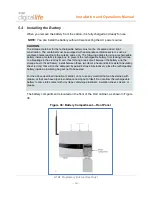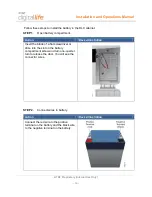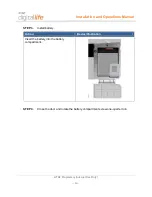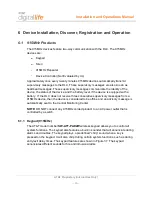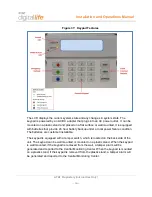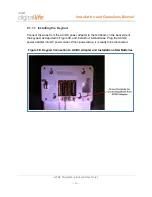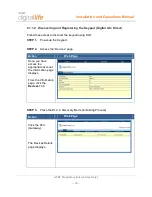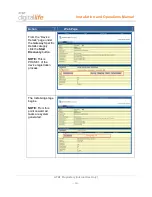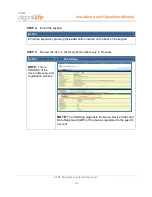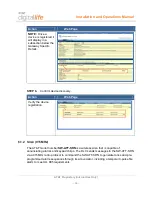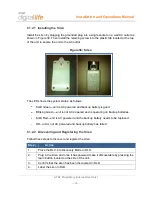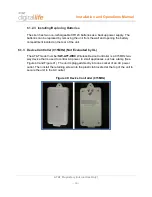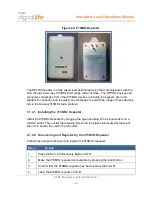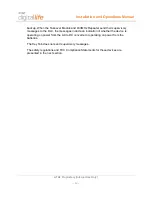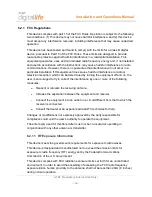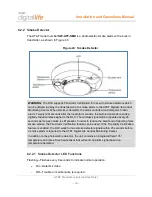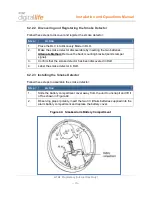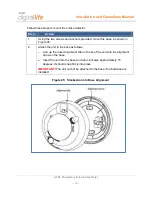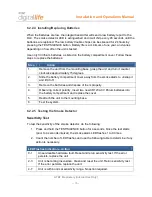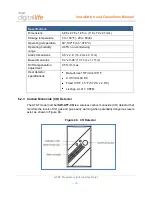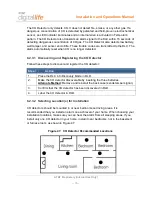
Installation and Operations Manual
AT&T Proprietary (Internal Use Only)
—66—
6.1.4.3 Installing/Replacing Batteries
The repeater has two non-rechargeable CR123 batteries as a backup power supply. The
batteries can be replaced by removing the unit from the wall and opening the battery
compartment located on the rear of the unit.
6.2 433MHz Products
The 433MHz devices feature one-way communication with the DLC. The 433MHz
devices are:
Smoke Detector
Carbon Monoxide (CO) Detector
Vanishing Door/Window (D/W) Sensor
Recessed D/W (RDW) Sensor
Glass Break Detector
Motion Detector (PIR)
Key Fob
Takeover Module
433MHz Repeater
Temperature/Flood Sensor (Not Evaluated by UL)
Garage Door Tilt Sensor (Not Evaluated by UL)
Approximately once an hour the 433MHz devices automatically transmit supervisory
messages to the DLC. These supervisory messages are also known as heartbeat
messages. These supervisory messages communicate the identity of the device, device
specific information and if the battery level is low. A 433MHz device only sends a
supervisory message if it has not sent any transmissions to the DLC within the last hour.
If the DLC does not receive three consecutive hourly supervisory messages from a
433MHz device, then the device is considered to be offline and an advisory message is
automatically sent to the Central Monitoring Center.
The Takeover Module and 433MHz Repeater always send supervisory messages to the
DLC on an hourly basis independent of previous transmissions to the DLC. The
Takeover Module and 433MHz Repeater normally operate on power from an AC to DC
converter. Both devices are also equipped with batteries that support 24 hour battery

